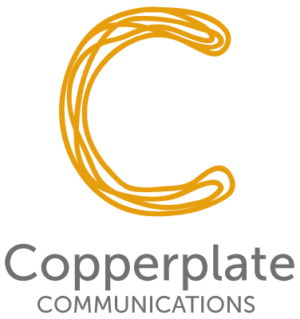The Secret to Not Having Writers’ Block—Ever
At a recent marketing event, I got to chatting with one of the guest speakers. He asked about the kind of work I do and the types of clients I serve.
After explaining that I create marketing content for small to medium size businesses, he asked whether I ever struggle with writers’ block.
I thought about it for a moment and then said, “No. I don’t.”
“Ever?” he asked.
“Ever.”
Writers’ Block is a Problem of Process
You might think of writers’ block as a problem of fiction writers. But copywriters and content markers aren’t immune from the experience of staring at a blank screen, fingers silent on the keyboard.
It’s not a good feeling, especially if you’re on a tight deadline.
But several years ago, I developed a process that prevents writers’ block from gaining a foothold. It consists of two steps:
- Mind mapping
- Composing a truly awful first draft.
The Mind Map
As soon as I get off a client call where we’ve discussed the client’s next blog post, article or other piece of content, I make a mind map.
A mind map is a visual method of representing concepts. It helps me come up with new ideas, look for relationships and angles, develop questions and find the most logical structure for a piece.
The end product of mind mapping is kind of like an outline, but the process is more creative and doesn’t impose artificial limits.
Here’s an example of one (forgive the indecipherable handwriting):
As I work on the mind map, I may do more research to explore new ideas or fill in gaps. I might also occasionally go back to the client with a question or two.
Then, once the mind map feels complete, I proceed to write a draft.
I never have writers’ block when it sit down to write my first draft because I always have lots of information and ideas to work with on my mind map.
The Truly Awful First Draft
Part of never getting writers’ block is giving yourself permission to write total and complete garbage.
When I write my nausea-inducing first draft, spelling doesn’t count. Grammar doesn’t count. Ideas can be all over the place. Logic may cease to exist. Meandering asides and diversions are welcome. Incomplete sentences are good. A jumbled heap of text and ideas is perfectly acceptable.
But no matter how disturbing and puzzling the stream of words, I just keep typing and going and going and typing—without going back to edit!
Throughout this process, I refer to my mind map, my notes and the client’s notes (if any). I refrain for getting pulled back into research, although I might put in a note as a reminder to check something out. But then I keep going.
If I’m stuck for a specific word or phrase or name, I’ll throw in “xxxxxxx” and come back to it later.
The most important thing is to keep going. And not get caught in details.
Horrible first drafts are fun and easy to write once you get used to them. And you’re never at a loss for what to write because you already have everything you need. And there’s zero pressure to produce anything good. You just have to produce.
Once I’ve written my revolting first draft, I put it aside for a day or two.
When I come back to the draft, I approach it as an editor, not a writer. I role up my sleeves and get started on turning the pile of steaming garbage into a work of art.
And voila! Writers’ block doesn’t stand a chance.
For more on mind mapping and writing ridiculously bad drafts, I recommend subscribing to The Publication Coach newsletter.


